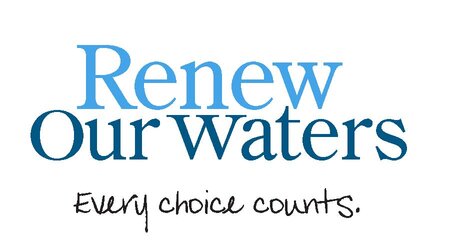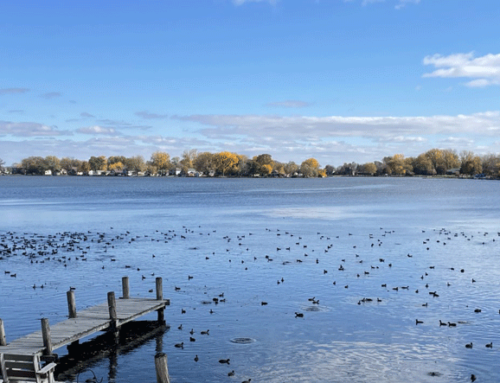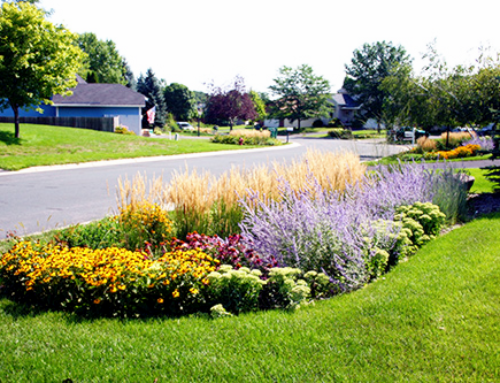The nutrient phosphorus is essential for all living organisms and naturally occurs in the environment. Because of this, it might not be the first thing that comes to mind when you think of pollution. However, too much phosphorus in Wisconsin water bodies can cause environmental, economic, and public health issues.
What’s the big deal?
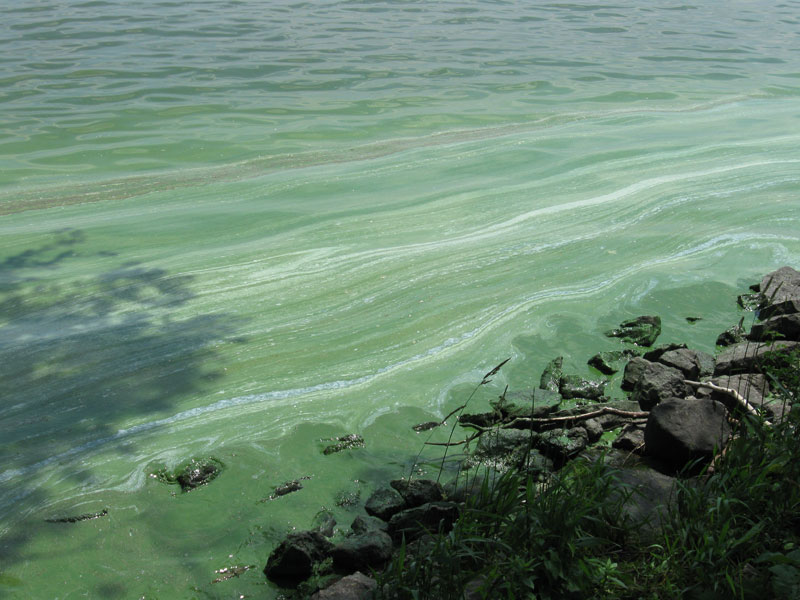
Blue-green algae fouls a shoreline.
When excess phosphorus enters an aquatic system, what often follows is more plant and algal growth than the system can handle. Large, dense populations of aquatic plants and algae can inhibit water recreation and shade out other important plants, reducing biodiversity. When these plant mats die later in the year, the decomposition process consumes dissolved oxygen which causes illness or death of fish and other aquatic animals. Algal blooms – specifically blue-green algae – can be hazardous to human health as well. Blue-green algae produce toxins that can cause illness in humans and pets when exposed through physical contact, ingestion, consumption of affected fish, and inhalation.
According to the Wisconsin Department of Tourism’s 2020 Outdoor Economy Report, outdoor tourism contributes $7.8 billion to Wisconsin GDP. With water recreation constituting a huge portion of that, healthy aquatic ecosystems are important. Nutrient pollution is a killer for Wisconsin’s economy.
Where is all the phosphorus coming from?
One of the main sources of phosphorus in lakes and rivers comes from urban stormwater; primarily lawn fertilizer, leaf litter, and grass clippings. When these substances are left on impermeable surfaces like roads and sidewalks, they are swept away with rainwater and carried into storm drains and ditches. Water that goes into stormwater systems is discharged into local lakes and rivers. But protecting our local waters doesn’t mean sacrificing a beautiful outdoor space.
Tips for a healthier lawn and local waterways this summer:
- Mow often – Taller grass has deeper roots that prevent soil loss and help rain soak in. Cut no more than 1/3 the length of the grass each time you mow.
- Don’t bag – Leave clippings on your lawn to keep soil moist and return nutrients over time, use clippings as garden mulch, or compost them instead.
- Sweep it up – If clippings get in the street or on sidewalks, sweep them back onto your lawn so they don’t get washed into the storm drain when it rains.
- Fertilize right – Chemicals are not necessary for a healthy lawn. But if you must fertilize, think before you buy. Get a soil test to know how much nutrients your lawn really needs. Fertilize in fall, and sweep up any fertilizer that falls on the street or sidewalks to dispose of properly.
Community Spotlight: Little Chute, WI
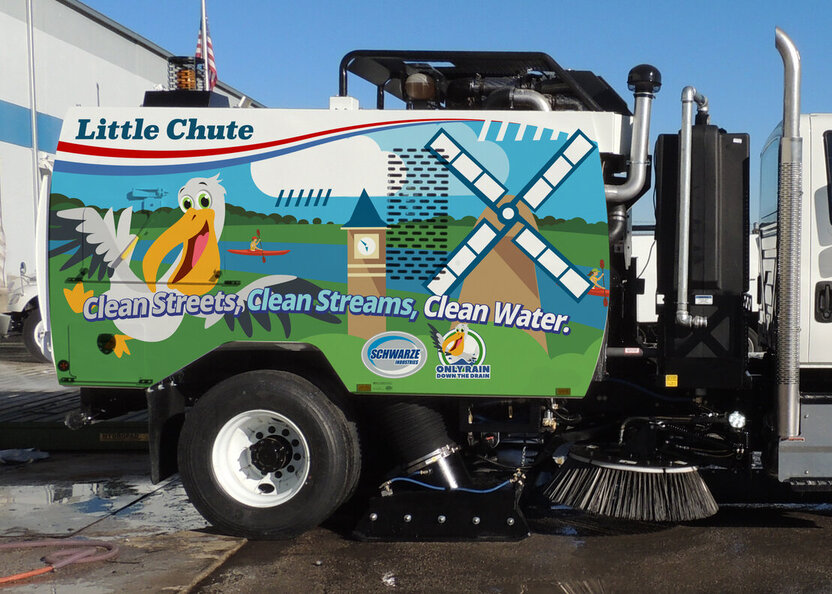
The Village of Little Chute considers their 2019 Schwarze Industries Street Sweeper a watershed hero, and we do too! The sweeper is outfitted with a colorful body wrap that informs residents about the importance of keeping all but rain out of storm drains. Laura Braatz from the Little Chute Department of Public Works says, “Street sweepers do all the dirty work to keep roads, driveways, and parking lots neat, litter-free, and help preserve our local waterways.” There are also many other benefits of street sweeping. The removal of roadside debris lessens the rate of vehicle accidents and improves safety for drivers, pedestrians, and cyclists. Sweeping also helps to remove harmful materials from the vicinity of our schools and homes, and helps extend the lifetime of paved roads.

